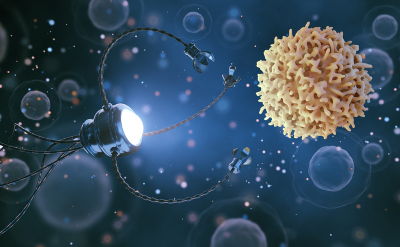An investigational nanomedicine developed for the treatment of AML has tested well during clinical trials at centers across Europe, according to a press release
The trial results were published in the Journal of Hematology and Oncology, showing that the drug is effective in treating the disease, while not having the same safety risks of the currently available options. According to the release, the treatment is “specifically targeted to the tumor cells without damaging normal cells.”

“We have designed a nanoconjugate that is targeted only to the cells that express in their membrane a receptor called CXCR4, which is overexpressed in leukemic cells,” said CIBER-BBN group leader Ramon Mangues in the release. “Thus, this nanoparticle can only enter and deliver the toxin into the cells that express this receptor.
In addition to showing how the medicine affects cancer cells, the release also notes the ability to block the spread of leukemic cells in mice without toxicity or adverse effects. Because of its ability to target cancer cells, the release said it could be an ideal treatment for elderly patients or those who might not be able to tolerate currently available options well.
“The novel nanoparticle could be used to treat patients that have developed resistance to drugs or those that have experienced relapse, since their leukemic cells would likely have higher expression of the CXCR4 receptor,” Mangues said. “Hence, there is a wide range of patients that could benefit of this new treatment, which could have a major clinical impact if its effectiveness was confirmed in further clinical trials.”
